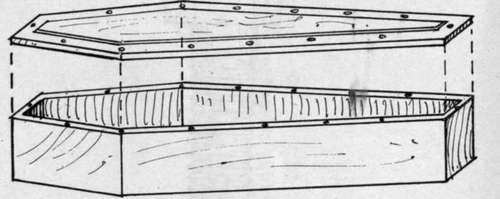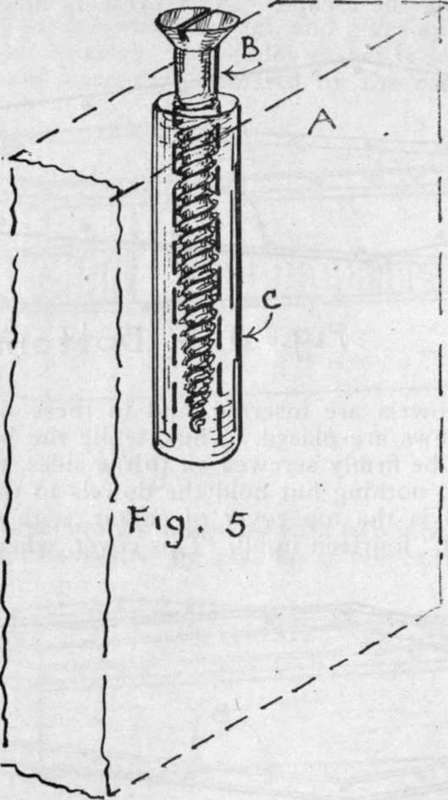The Coffin
Description
This section is from the book "Secrets Of The Great Mysteries", by Oudini. Also available from Amazon: Secrets Of The Great Mysteries.
The Coffin
This is a most spectacular act, and gives an appearance of great mystery. A wooden casket is seen upon the 'stage and carefully examined by the committee:
The cover is securely screwed on with two-inch screws, and the screws sealed by placing a one-cent stamp over the head of each one. The method of escape will be made clear by the accompanying cuts.

Fig. 1.

Fig. 2.
Fig. 1. shows the appearance of coffin before the cover is placed on, and Fig. 2 shows the same with the cover in place. Fig. 3 is the bottom which is to be removed in making the escape. "A" represents holes through which dowels are inserted, and in these dowels the long screws are placed. Thus, while the bottom appears to be firmly screwed on to the sides, the screws really do nothing but hold the dowels to the bottom.

Fig. 3. Bottom.
Fig. 4 is the top cover of casket, with the screw-holes "B," fourteen in all. This cover, when in place, extends one-third of an inch beyond the sides of the casket. Fig. 5 shows the manner in which the screw sets into the dowel, also the manner in which the dowel sets into the board. "A" is the side board, "B" the screw, and "C" the dowel.

Fig. 4. Top.

The method of escape is as follows: On the bottom board, Fig. 3, there are fourteen dowels like that shown in Fig. 5. These set into Fig. 3 at "A-A." After the dowels are in place and the casket looks as in Fig. 2, the bottom cannot be taken off from the outside.
When the cabinet is in place the performer simply puts his hands on the cover and pushes upward, which lifts off the top and sides, leaving the bottom lying on the floor with the performer free. He now replaces the bottom by turning the casket upside down and putting the dowels in position again. The casket is now placed in position again and the cabinet removed, showing the act completed.
This trick will make a fine appearance if, in addition, ropes and handcuffs are used.
Continue to:
